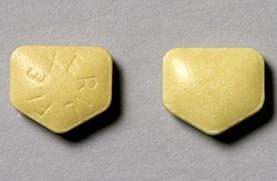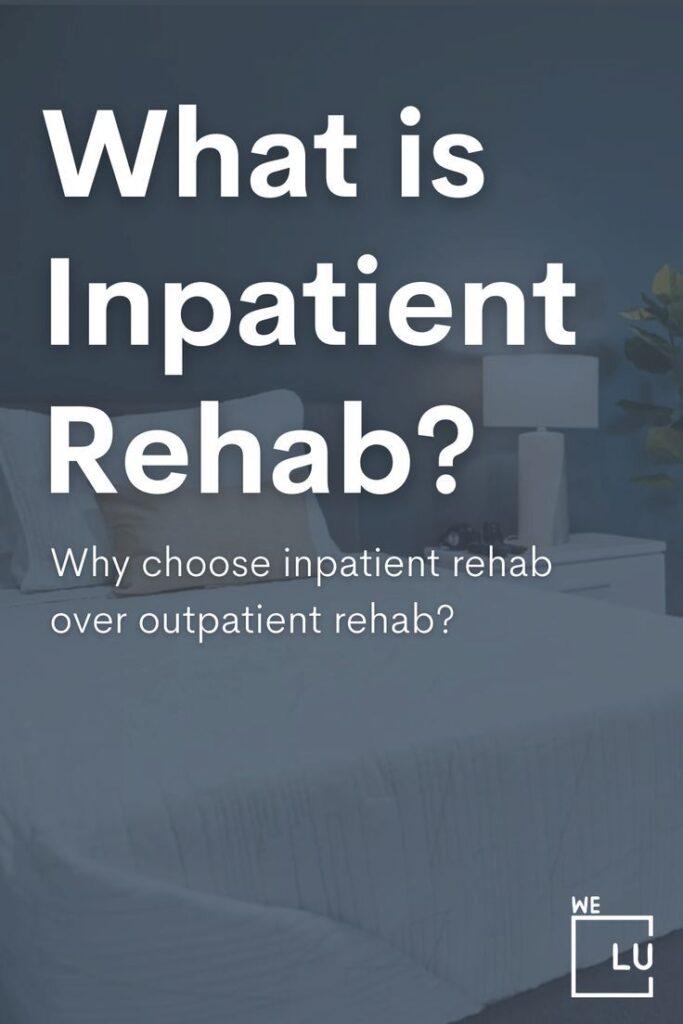What Are The Uses Of Cyclobenzaprine Versus Tizanidine?
Cyclobenzaprine and Tizanidine are prescribed for treating muscle spasms and related conditions, but they may have slightly different uses and indications. Let’s explore their uses in more detail:
Cyclobenzaprine Uses:
- Muscle Spasms: Cyclobenzaprine is primarily prescribed to relieve muscle spasms associated with acute musculoskeletal conditions, such as muscle strains, sprains, and injuries.
- Musculoskeletal Pain: Cyclobenzaprine can help alleviate associated musculoskeletal pain and discomfort in addition to muscle spasms.
- Fibromyalgia: Cyclobenzaprine may be prescribed as an off-label treatment for fibromyalgia, a chronic condition characterized by widespread musculoskeletal pain and tenderness.
Tizanidine Uses:
- Muscle Spasms: Tizanidine is commonly prescribed for treating muscle spasms associated with various conditions, including musculoskeletal injuries, multiple sclerosis, and spinal cord injuries.
- Chronic Conditions: Tizanidine can also manage chronic conditions involving muscle spasticities, such as multiple sclerosis and cerebral palsy.
- Migraine Headaches: Tizanidine may be prescribed off-label to help alleviate migraine headaches, as it can help relax tense muscles and reduce associated pain.
The specific use of these medications may vary depending on the individual patient, their medical condition, and the healthcare professional’s assessment.
The decision to use Cyclobenzaprine or Tizanidine, as well as the appropriate dosage and duration of treatment, should be determined by a healthcare professional based on a thorough evaluation of the patient’s needs and medical history.
What Is The Difference Between Cyclobenzaprine And Tizanidine?
Cyclobenzaprine and Tizanidine, belonging to the muscle relaxants class, have distinct differences in several aspects.
- Mechanism of Action: Cyclobenzaprine primarily acts as a central nervous system depressant by inhibiting muscle spasms through its effects on the brain and spinal cord. On the other hand, Tizanidine works by directly suppressing motor neurons in the spinal cord, reducing muscle tone and relieving spasms.
- Pharmacokinetics: Cyclobenzaprine has a longer half-life (18 hours) than Tizanidine (2-4 hours). This means that Cyclobenzaprine remains active in the body longer, requiring less frequent dosing.
- Sedation and Drowsiness: Cyclobenzaprine is associated with a higher likelihood of causing sedation and drowsiness. It has more pronounced effects on the central nervous system, leading to a more significant potential for daytime sleepiness. Tizanidine, while also causing drowsiness, generally has a milder sedating effect.
- Drug Interactions: Cyclobenzaprine is more likely to interact with other medications due to its effects on various neurotransmitter systems. It can potentially interact with drugs that affect serotonin levels, leading to the risk of serotonin syndrome. Although it also has some potential interactions, Tizanidine is generally considered to have fewer significant interactions.
- Formulations: Cyclobenzaprine is available as an immediate-release tablet and an extended-release capsule. Tizanidine is available as an immediate-release tablet and a capsule, allowing for more flexible dosing options.
The choice between Cyclobenzaprine and Tizanidine depends on individual patient factors, medical history, and the specific nature of the treated condition. Consulting with a healthcare professional is crucial to determine the most appropriate medication for each individual’s needs.

Skip To:
Learn More:
- How Long Does Flexeril Stay In Your System?
- Cyclobenzaprine And Ibuprofen. Can You Take Them Together?
- Is Cyclobenzaprine Addictive? Flexeril Addiction & Abuse
- What Does A Cyclobenzaprine High Feel Like?
- Is Flexeril Addictive? Symptoms, Side Effects & Treatment
- Flexeril and Alcohol, What Are The Dangers and The Effects? (Cyclobenzaprine)
Get Help. Get Better. Get Your Life Back.
Searching for Accredited Drug and Alcohol Rehab Centers Near You?
Even if you have failed previously and relapsed, or are in the middle of a difficult crisis, we stand ready to support you. Our trusted behavioral health specialists will not give up on you. When you feel ready or just want someone to speak to about therapy alternatives to change your life call us. Even if we cannot assist you, we will lead you to wherever you can get support. There is no obligation. Call our hotline today.
(844) 597-1011Popular Cyclobenzaprine Versus Tizanidine FAQs
-
Are Tizanidine And Cyclobenzaprine The Same?
No, Tizanidine and Cyclobenzaprine are not the same. While they both belong to the class of muscle relaxants and are used to treat muscle spasms, they have different mechanisms of action, pharmacokinetics, and potential side effects. It is important to consult with a healthcare professional to determine which medication is most suitable for your specific condition.
-
Can You Take Cyclobenzaprine And Tizanidine Together?
Taking Cyclobenzaprine and Tizanidine together is generally not recommended without the guidance and approval of a healthcare professional. These medications have similar effects and may potentiate each other’s sedative and muscle relaxant properties, leading to an increased risk of side effects such as drowsiness, dizziness, and impaired coordination. Consulting a healthcare professional to ensure safe and appropriate medication use is crucial.
-
Tizanidine 4 Mg Vs Cyclobenzaprine 10mg. Which is Better For Pain?
The choice between Tizanidine 4 mg and Cyclobenzaprine 10 mg depends on various factors, including the underlying cause of pain, individual patient response, and healthcare professionals’ assessment. Both medications have demonstrated efficacy in relieving muscle spasms and associated pain, but their effectiveness may vary from person to person. It is best to consult with a healthcare professional who can evaluate your specific condition and determine the most suitable medication and dosage for pain management.
Cyclobenzaprine Addiction Facts
Cyclobenzaprine Addiction Overview
Flexeril (cyclobenzaprine) is a muscle relaxant commonly prescribed to alleviate muscle spasms and discomfort associated with musculoskeletal conditions. While Flexeril is not considered highly addictive, it can still lead to dependence and abuse if not used as directed.
Prolonged or misused Flexeril can result in withdrawal symptoms and other adverse effects. Individuals need to follow their healthcare provider’s instructions, use the medication as prescribed, and communicate any concerns or changes in symptoms promptly. Consulting a healthcare professional is crucial for proper guidance and monitoring when using Flexeril to minimize the risk of addiction.
Cyclobenzaprine Addiction Signs
- Increasing Tolerance: Individuals may develop a tolerance to Flexeril over time, requiring higher doses to achieve the desired effects. This can be an indication of addiction.
- Continued Use Despite Negative Consequences: Despite experiencing adverse effects on physical health, relationships, work, or other areas of life, individuals may continue to use Flexeril compulsively.
- Preoccupation with Flexeril: An individual addicted to Flexeril may spend significant time obtaining the drug, using it, or thinking about it. This preoccupation can interfere with daily responsibilities and activities.
- Loss of Control: People with a Flexeril addiction often find controlling or limiting their drug use challenging. They may have unsuccessful attempts to cut down or quit using Flexeril.
- Withdrawal Symptoms: When attempting to stop or reduce the use of Flexeril, individuals may experience withdrawal symptoms such as muscle aches, restlessness, irritability, anxiety, insomnia, sweating, and nausea.
- Neglecting Other Activities: As Flexeril becomes the primary focus, individuals may neglect activities they previously enjoyed, or that were important to them, such as hobbies, socializing, or work commitments.
Cyclobenzaprine Addiction Treatment
Flexeril addiction treatment typically involves a comprehensive approach that addresses both addiction’s physical and psychological aspects. Here are some common treatment options:
- Medical Detoxification: If an individual has developed a dependence on Flexeril, a medically supervised detoxification process may be necessary to manage withdrawal symptoms safely. Medical professionals can gradually taper the dosage during this phase to minimize discomfort and ensure a safe transition.
- Behavioral Therapy: Various forms of therapy, such as cognitive-behavioral therapy (CBT), can be beneficial in treating Flexeril addiction. These therapies help individuals identify and modify unhealthy thoughts, behaviors, and triggers associated with drug use and develop effective coping strategies.
- Support Groups: Participating in support groups, such as Narcotics Anonymous (NA), can provide individuals with a sense of community, understanding, and encouragement. Sharing experiences and learning from others who have overcome addiction can be instrumental in the recovery process.
- Individual Counseling: Individual counseling sessions with a qualified therapist or counselor can provide a safe and confidential space to explore underlying issues that may have contributed to drug abuse. These sessions can help individuals develop healthier coping mechanisms and gain insights into their addiction.
- Dual Diagnosis Treatment: If a co-occurring mental health disorder is present alongside Flexeril addiction, integrated treatment that addresses both conditions simultaneously is crucial. This approach ensures that individuals receive comprehensive care for their physical and psychological well-being.
- Medication-Assisted Treatment (MAT): In some cases, medications may be used as part of a comprehensive treatment plan to help manage cravings and withdrawal symptoms. However, there are no specific medications approved for treating Flexeril addiction, so the use of medications would be based on individual circumstances and the presence of other substances.
Cyclobenzaprine Addiction Statistics
Understanding the scope and impact of Flexeril (cyclobenzaprine) addiction is essential for addressing this issue. By examining Flexeril addiction statistics, we can gain insights into the prevalence, trends, and consequences associated with the misuse and abuse of this medication. These statistics shed light on the challenges faced by individuals and communities affected by Flexeril addiction, highlighting the need for awareness, prevention, and effective treatment strategies.
0.2%
Approximately 0.2% of individuals aged 12 and older in the United States reported misusing cyclobenzaprine (the generic name for Flexeril) in 2018.
Source: SAMHSA
2003 to 2015
JAMA Network Open found that the misuse of muscle relaxants, including cyclobenzaprine, increased significantly during this period.
Source: JAMA Network Open
79.1%
From 2004 to 2015, cyclobenzaprine-related emergency department visits increased by 79.1%.
Source: Journal of Addiction Medicine

Get Your Life Back
Find Hope & Recovery. Get Safe Comfortable Detox, Addiction Rehab & Dual Diagnosis High-Quality Care.
Hotline(844) 597-1011
What Are Tizanidine Versus Cyclobenzaprine Similarities?
Cyclobenzaprine and Tizanidine, two commonly prescribed muscle relaxants, share similarities and differences. Let’s explore these similarities in more detail:
- Indications: Cyclobenzaprine and Tizanidine are indicated for treating muscle spasms and musculoskeletal conditions. They are often prescribed for muscle strains, sprains, and related pain.
- Muscle Relaxation: One of the key similarities between these medications is their ability to induce muscle relaxation. Cyclobenzaprine and Tizanidine target the central nervous system to reduce muscle spasms, ease muscle tension, and promote muscle relaxation.
- Efficacy: Studies have shown that Cyclobenzaprine and Tizanidine can effectively alleviate muscle spasms and associated symptoms. However, it’s important to note that individual responses to these medications may vary. What works well for one person may not be as effective for another.
- Side Effects: While the specific side effects may differ in severity and frequency, Cyclobenzaprine and Tizanidine can potentially cause similar adverse reactions. These may include drowsiness, dizziness, dry mouth, fatigue, blurred vision, and potential gastrointestinal disturbances. It is essential to be aware of these potential side effects and discuss any concerns with a healthcare professional.
- Caution in Certain Populations: Both medications require caution and close monitoring in specific populations. Individuals with liver impairment should use Cyclobenzaprine and Tizanidine cautiously, as dosage adjustments may be necessary. Additionally, elderly patients and those with underlying medical conditions may be more susceptible to the side effects of these medications and may require careful monitoring.
- Short-term Use: Cyclobenzaprine and Tizanidine is typically prescribed for short-term use, usually for a few weeks. Prolonged use may lead to tolerance and dependence. It is important to follow the prescribed duration of treatment and not exceed recommended dosages.
- Individual Considerations: Despite the similarities, the choice between Cyclobenzaprine and Tizanidine depends on individual patient factors, including medical history, concurrent medications, and the nature of the condition being treated. Healthcare professionals consider these factors when determining the most suitable option for each patient.
In conclusion, Cyclobenzaprine and Tizanidine have differences in their mechanisms of action, pharmacokinetics, and side effect profiles. However, they also share commonalities in their indications, muscle relaxant properties, efficacy, and cautions in certain populations. Understanding these similarities can help patients and healthcare professionals make informed decisions about which medication may be more suitable for individual needs. However, consulting with a healthcare professional for personalized advice and guidance regarding the most appropriate treatment option is crucial.
First-class Facilities & Amenities
World-class High-Quality Addiction & Mental Health Rehabilitation Treatment
Rehab Centers TourRenowned Addiction Centers. Serene Private Facilities. Inpatient rehab programs vary.
Addiction Helpline(844) 597-1011Proven recovery success experience, backed by a Team w/ History of:
15+
Years of Unified Experience
100s
5-Star Reviews Across Our Centers
10K
Recovery Success Stories Across Our Network
- Low Patient to Therapist Ratio
- Onsite Medical Detox Center
- Comprehensive Dual-Diagnosis Treatment
- Complimentary Family & Alumni Programs
- Coaching, Recovery & Personal Development Events
Which Is Stronger Cyclobenzaprine Or Tizanidine?
When comparing the strength of Cyclobenzaprine and Tizanidine, it is essential to note that strength can be subjective and may vary depending on individual responses and specific medical conditions. However, in general, Tizanidine is considered to have a stronger muscle relaxant effect compared to Cyclobenzaprine.
Tizanidine acts directly on motor neurons in the spinal cord, leading to a more potent reduction in muscle tone and spasticity. Conversely, Cyclobenzaprine primarily works as a central nervous system depressant, targeting the brain and spinal cord to alleviate muscle spasms.
It is important to remember that the strength or effectiveness of a muscle relaxant can vary from person to person, and what may work well for one individual may not be as effective for another.
The choice between Cyclobenzaprine and Tizanidine should be based on the specific needs and characteristics of the patient, and it is recommended to consult with a healthcare professional who can evaluate your condition and provide personalized advice on the most suitable medication for you.

World-class, Accredited, 5-Star Reviewed, Effective Addiction & Mental Health Programs. Complete Behavioral Health Inpatient Rehab, Detox plus Co-occuring Disorders Therapy.
CALL(844) 597-1011End the Addiction Pain. End the Emotional Rollercoaster. Get Your Life Back. Start Drug, Alcohol & Dual Diagnosis Mental Health Treatment Now. Get Free No-obligation Guidance by Substance Abuse Specialists Who Understand Addiction & Mental Health Recovery & Know How to Help.
We Level Up Dual Diagnosis Treatment
We Level Up is a renowned rehabilitation center for its comprehensive methods in assisting individuals with addiction to Cyclobenzaprine and co-occurring mental health disorders. The facility recognizes the intricate connection between addiction and mental well-being. Combining evidence-based therapies, expert medical care and a holistic approach offers a comprehensive and effective path to recovery.
At We Level Up, various therapeutic techniques are utilized in their treatment approach. Individual counseling creates a nurturing environment where individuals can delve into the root causes of their addiction and address any emotional issues contributing to their struggles. Group therapy fosters a sense of camaraderie, allowing individuals to connect with others who have gone through similar experiences, enabling them to share insights and learn from one another’s journeys.
Behavioral therapies equip individuals with healthy coping mechanisms and valuable skills to manage cravings and triggers effectively. Furthermore, medication management may be integrated into a comprehensive treatment plan when appropriate.
Experience Transformative Recovery at We Level Up Treatment Centers.
See our authentic success stories. Get inspired. Get the help you deserve.
Start a New Life
Begin with a free call to an addiction & behavioral health treatment advisor. Learn more about our dual-diagnosis programs. The We Level Up Treatment Center Network delivers recovery programs that vary by each treatment facility. Call to learn more.
- Personalized Care
- Caring Accountable Staff
- World-class Amenities
- Licensed & Accredited
- Renowned w/ 100s 5-Star Reviews
We’ll Call You
Watch The Prescription Drug Abuse & Prescription Medication Addiction Recovery & Sobriety Story Informative Video
Video Script
“I wanted my life back. I was a shell of a person. I wanted to be trusted; I wanted relationships back that I lost, mainly my children and family. It started innocent enough, I got into a car accident, and then I got sucked into the whole, you know, medication issue with the pills. And before I knew it, I was in a cloud. I was sucked in by addiction, and with my mind, I kept thinking it was OK because a doctor was prescribing this for me, a doctor was giving me this, a doctor was giving me that.
So, I didn’t think I was doing anything wrong. Level Up supports my family and my relationships with my family, and they’ve helped me grow as a person. When I first started there, I was so intimidated and scared, you know? But, they’ve taught me, they’ve taught me how to come into my own. And then, you know, when I get the call from my twenty-one-year-old daughter in the middle of the day, to say ‘I love you, Mom.’ that’s amazing.”
Jen’s Addiction Recovery Testimonial.
Search We Level Up Cyclobenzaprine Versus Tizanidine Resources
Sources
- National Institute on Drug Abuse (NIDA) – Prescription Drug Misuse and Abuse: https://www.drugabuse.gov/publications/research-reports/misuse-prescription-drugs/overview
- Substance Abuse and Mental Health Services Administration (SAMHSA) – Prescription Drug Misuse and Abuse: https://www.samhsa.gov/
- U.S. Food and Drug Administration (FDA) – Drug Safety and Availability: Cyclobenzaprine Information: https://www.fda.gov/
- Centers for Disease Control and Prevention (CDC) – Prescription Opioid Overdose Data: https://www.cdc.gov/
- National Library of Medicine (NLM) – MedlinePlus: Cyclobenzaprine: https://medlineplus.gov/druginfo/meds/a682514.html
- National Institute on Drug Abuse (NIDA) – Principles of Drug Addiction Treatment: A Research-Based Guide: https://www.drugabuse.gov/publications/principles-drug-addiction-treatment-research-based-guide-third-edition
- National Institutes of Health (NIH) – National Institute on Drug Abuse (NIDA) – Treatment Approaches for Drug Addiction: https://www.drugabuse.gov/publications/drugfacts/treatment-approaches-drug-addiction
- SAMHSA – Find Treatment: https://www.samhsa.gov/find-treatment
- National Alliance on Mental Illness (NAMI) – Substance Use Disorders: https://www.nami.org/About-Mental-Illness/Common-with-Mental-Illness/Substance-Use-Disorders
- Office of National Drug Control Policy (ONDCP) – Prescription Drugs: https://www.whitehouse.gov/


